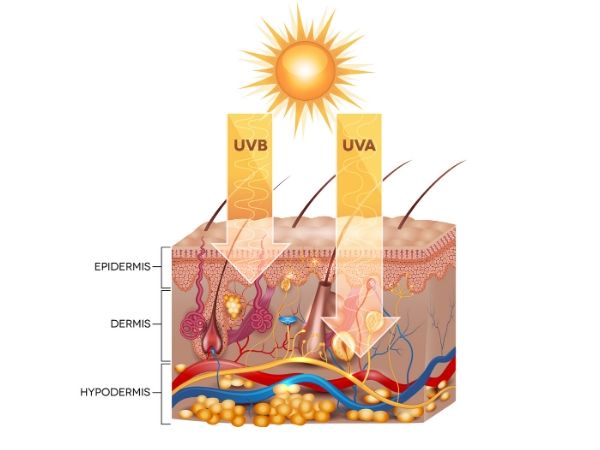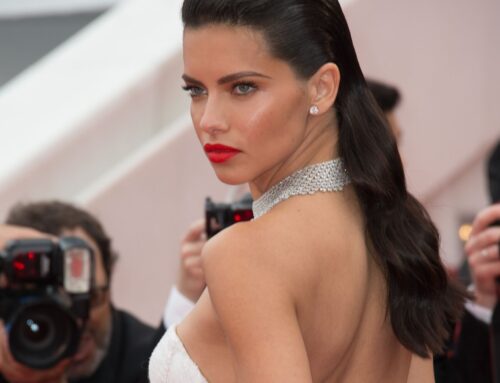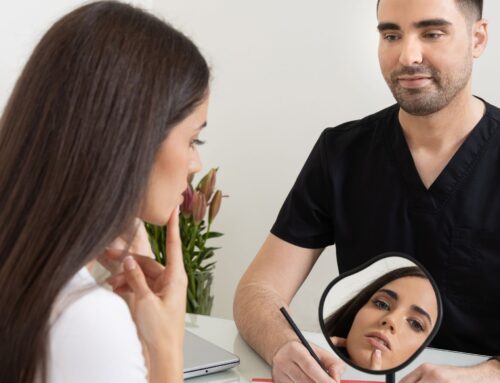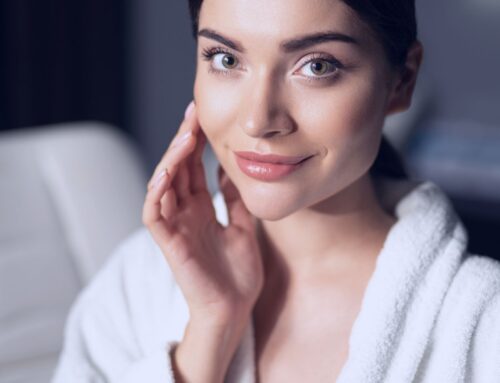Biological signs of skin aging
Older skin is dry, thin, relatively flat with a reduced level of collagen and elastin in it. Skin aging itself can be attributed to a multitude of external and internal factors:
- Effect of gravity on soft tissue causing excess skin to “fall”.
- Harmful consequences of solar radiation
- Hormonal changes in menopause
- Reduction of blood flow to the peripheral parts of the body
- Weight gain
- Relaxation of facial muscles and ligaments
- Decreased salivary gland tissue
- Bone resorption ie. decrease in the formation of bone tissue and its loss, which again leads to skin loss
The internal course of aging is a slow, unstoppable and degenerative process of tissue change that affects the entire organism. The pace and speed of aging varies from person to person and even differs between body parts of a person.
Internal factors of skin aging
The level of pigmentation in the skin
Skin with more pigment, darker, is better protected from the negative effects of the sun, is more compact and contains more intracellular fat, which can be a factor in slower skin aging.
Variations in skin thickness
The tightness and blood circulation of the skin is not the same in all parts of our body. The skin is much tighter on the forehead than for example. on the armpit. The reduction in skin thickness also varies on the body, causing some parts to age faster than others.
Influence of hormones
Hormonal changes in the skin are mainly due to changes in estrogen levels, especially in women. After menopause, there is a decrease in the level of water and collagen in the skin, a decrease in the thickness of the skin under the epidermis.
External factors of skin aging

Some of these factors are exposure to harmful solar radiation, environmental pollution, smoking, frequent and repetitive grimaces on the face (frequent frowning, squinting, etc.), diet, sleeping position, as well as general health.
Exposure to solar radiation
Our skin absorbs UV radiation, especially UVA and UVB rays, which creates reactive oxygen species or free radicals that have a harmful effect on the body’s cells. UV rays damage proteins such as collagen and elastin and lead to a process called photoaging. Signs of photoaging are: deep wrinkles, loss of skin elasticity, spots and hyperpigmentation, cracked capillaries and yellowish skin tone.
The influence of environment and environment
The temperature and humidity of the air affect the skin. For every 7-8 degrees Celsius rise in air temperature, the amount of water that evaporates from the body doubles. At low temperatures, the skin becomes harder, which directly affects the proteins and fats in the skin.
Smoking
In addition to affecting the internal organs, smoking changes the quality and shape of the skin. It becomes gray and worn. Various degenerative processes occur due to the reduction of blood flow to the capillaries of the skin, which creates nutritional malnutrition and a lack of oxygen in the skin. Studies have shown that smokers have less collagen and elastin in their skin, which makes it less elastic and tight.
Prevention of harmful effects of external skin aging factors
Skin photoprotection
Skin protection from harmful UV radiation is done by using protective creams with a protection factor of at least SPF30, using protective clothing (wide-brimmed hats, long-sleeved clothing that covers the skin, wearing sunglasses, etc.), as well as avoiding direct sunlight . It is recommended to avoid tanning beds, as well as going outside in the strongest sun during the summer months, when UV radiation is strongest. Likewise, sunbathing on the beach should not be practiced, but should be sheltered in the shade.
When choosing a protection cream, you should pay particular attention to the list of ingredients, the most reliable of which are those based on Helioplex and Mexoryl SX.
Also, it is necessary to expose yourself to solar radiation without applying any protective cream, but a maximum of 10 to 15 minutes a day! Our body needs vitamin D and the best way to get the necessary dose is through the sun, but never longer than 15 minutes.
Nutrition
Calorie restriction has a positive effect on extending life span and slowing down the aging process. It is important to note here that we are not referring to starvation, which leads to malnutrition and is a health hazard, but to a moderate intake of balanced food in the body.
Hormonal supplements
The use of melatonin has been shown to be an effective anti-aging strategy. Also, the replacement and addition therapy of DHEA (dehydroepiandrosterone), one of the most widespread steroids in the body, has become increasingly popular in recent years. Various techniques to increase insulin reactivity such as the use of testosterone, estradiol and growth hormone are also used in antiaging treatments.
Antiaging supplements
Vitamins A, C, beta-carotene, selenium, coenzyme Q10 are widely used in antiaging therapy. The mentioned antioxidants also have a prominent place in the fight against the harmful effects of free radicals.
It remains to be said that all the above-mentioned factors of protection and prevention of premature aging and deterioration of health have the best effect as a whole and if they are used together. Only then can we expect lasting and profound effects in preventing the aging of the body and preserving our health.




